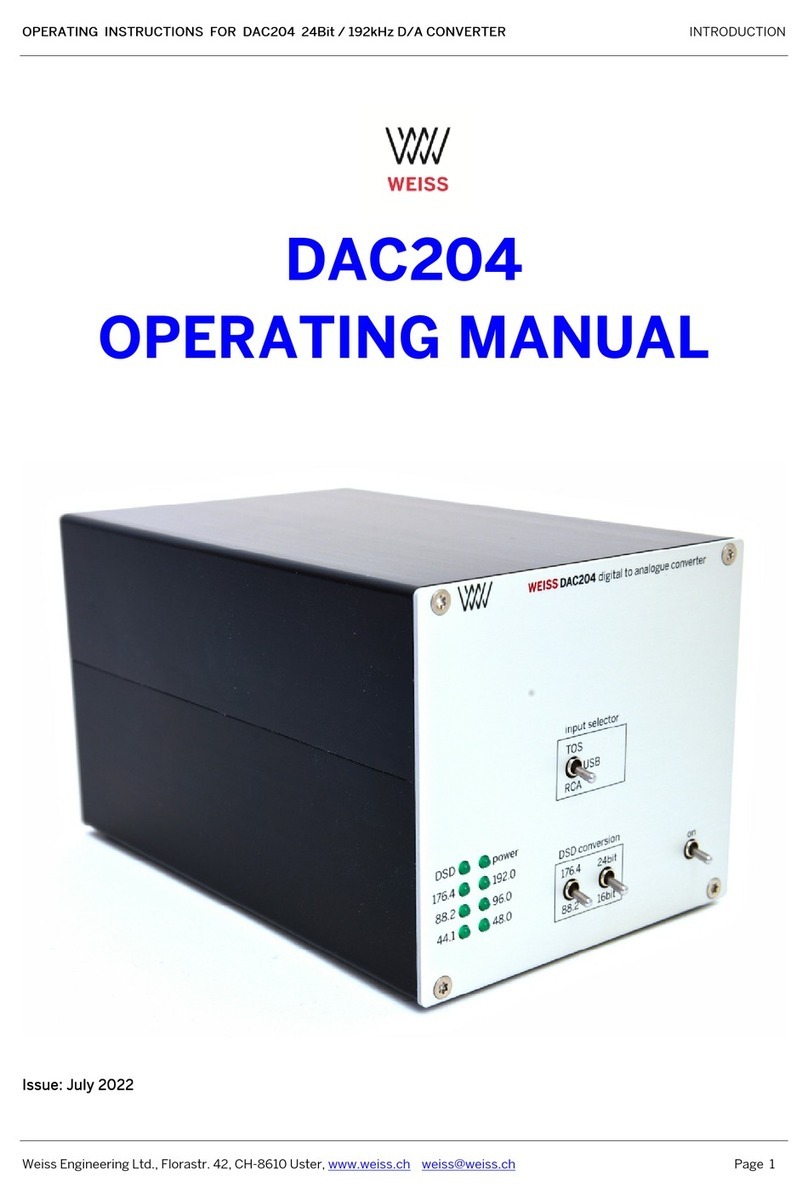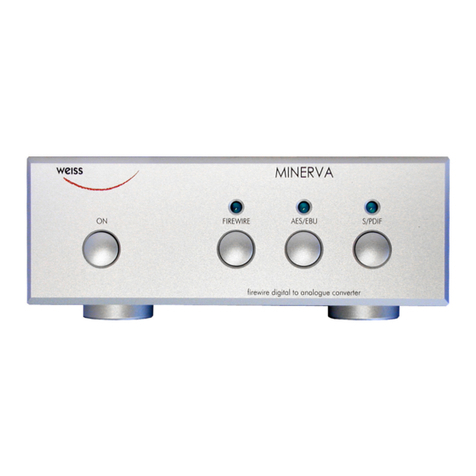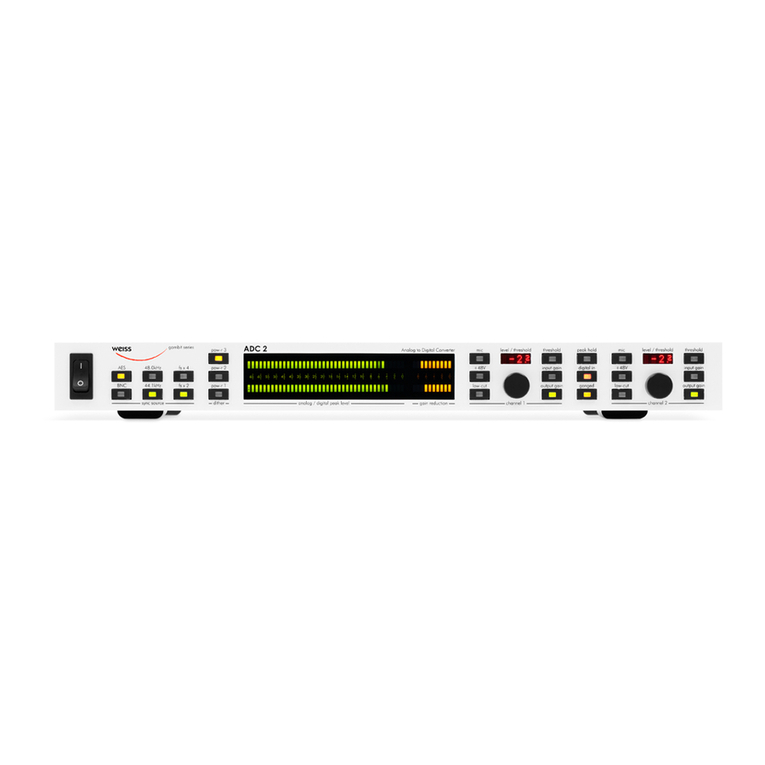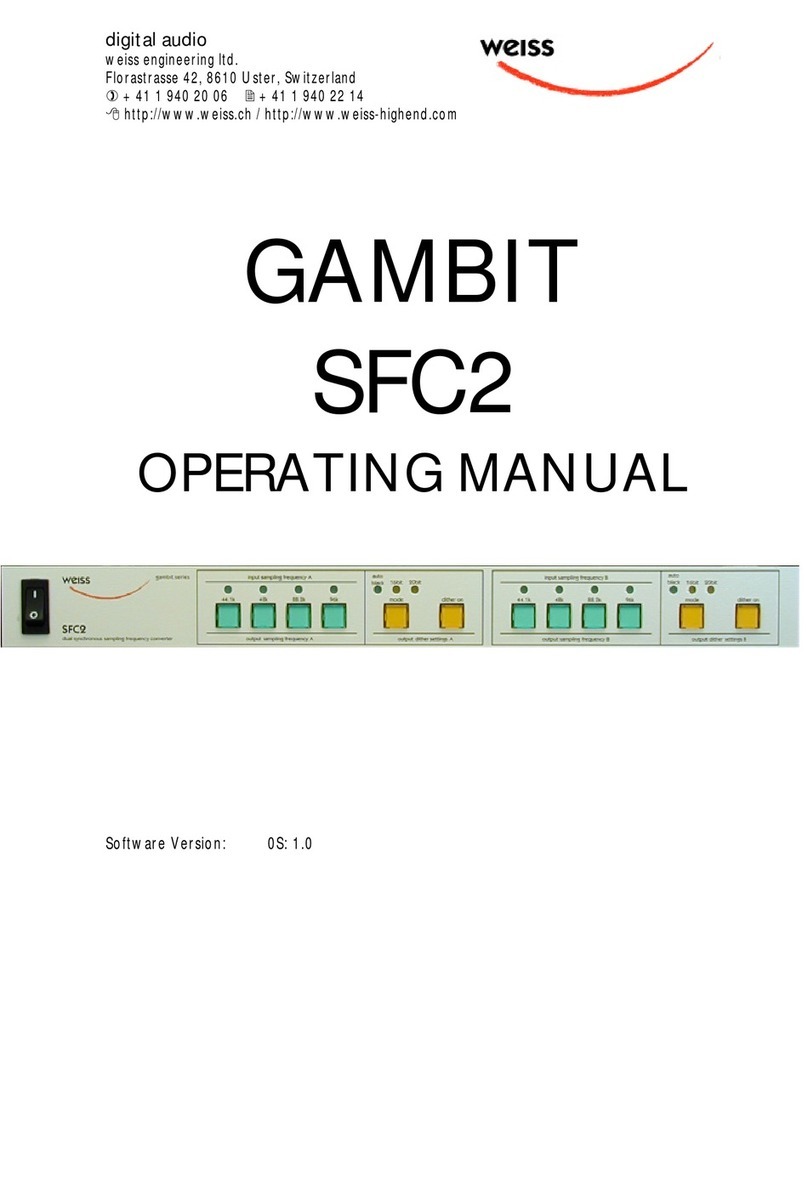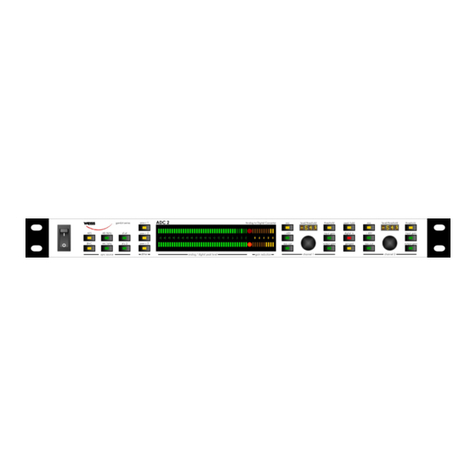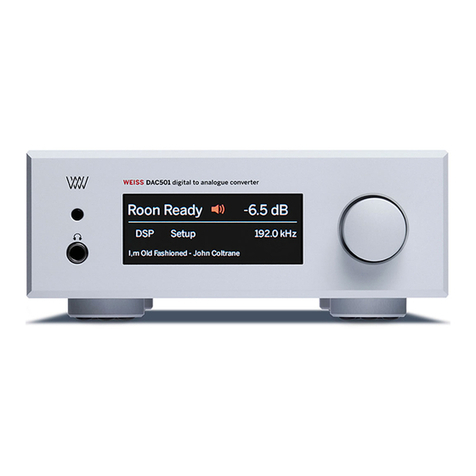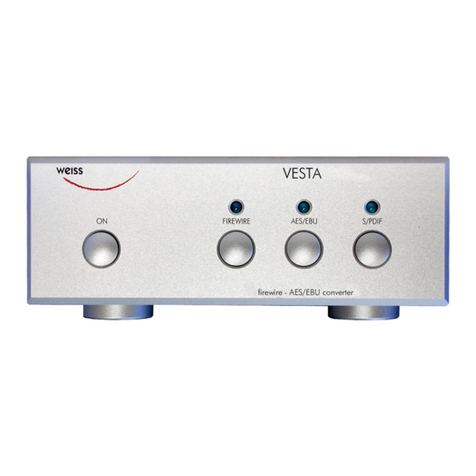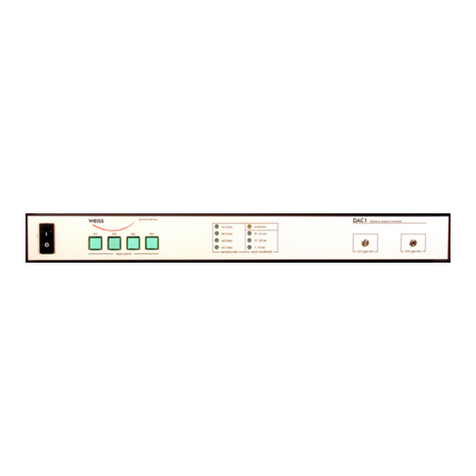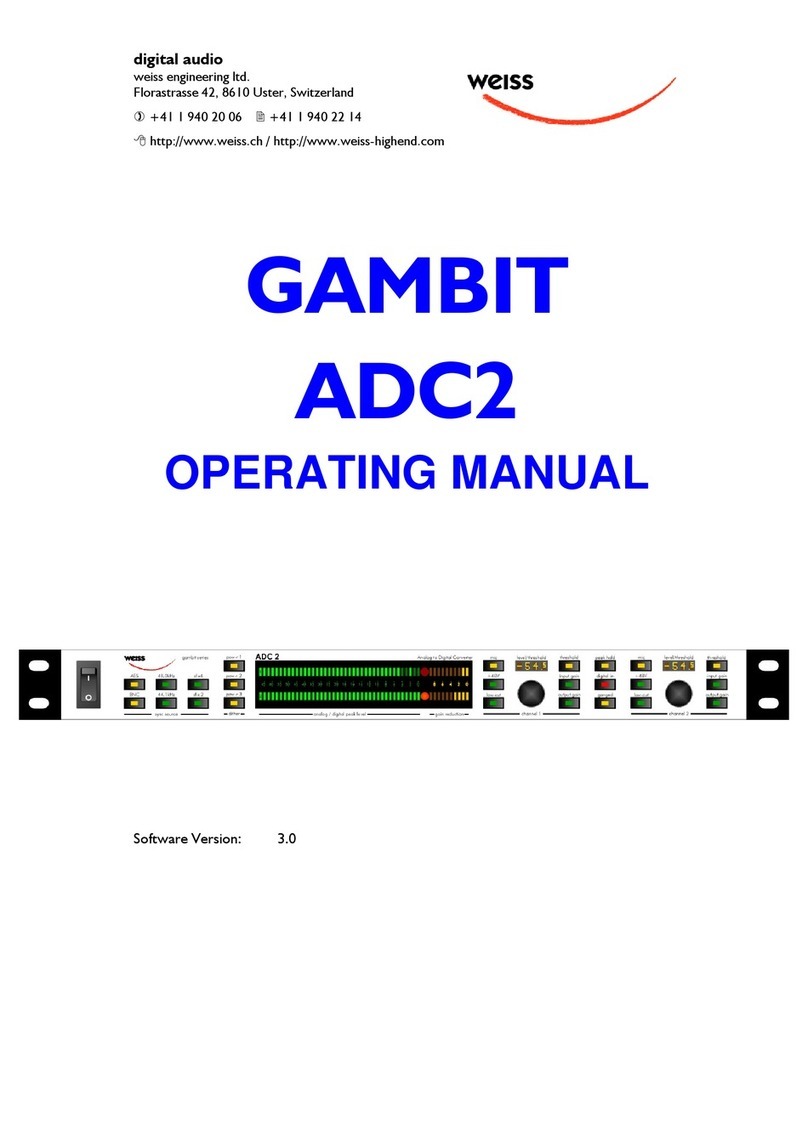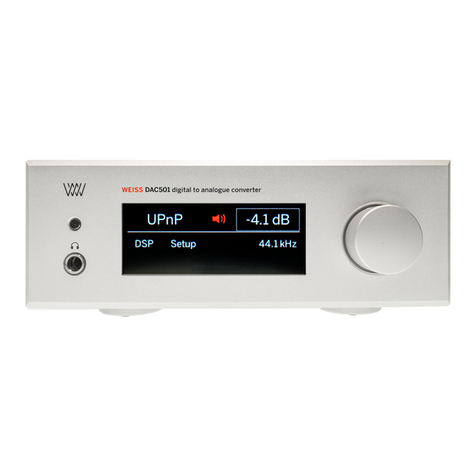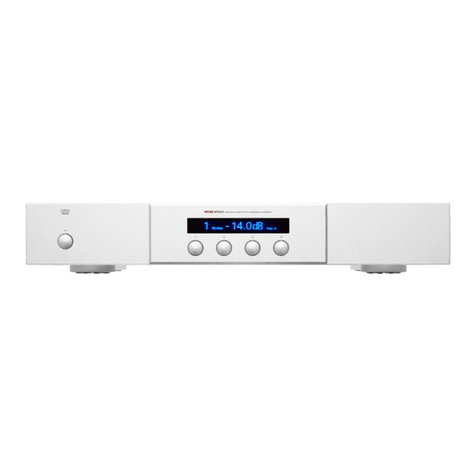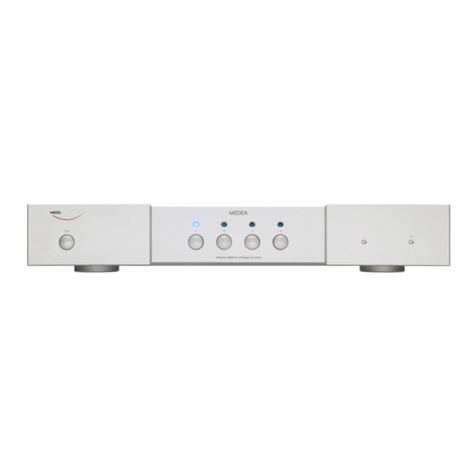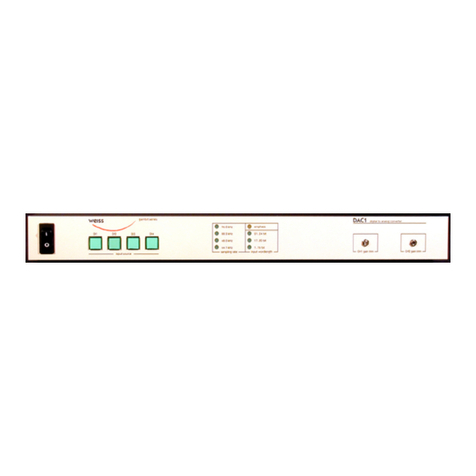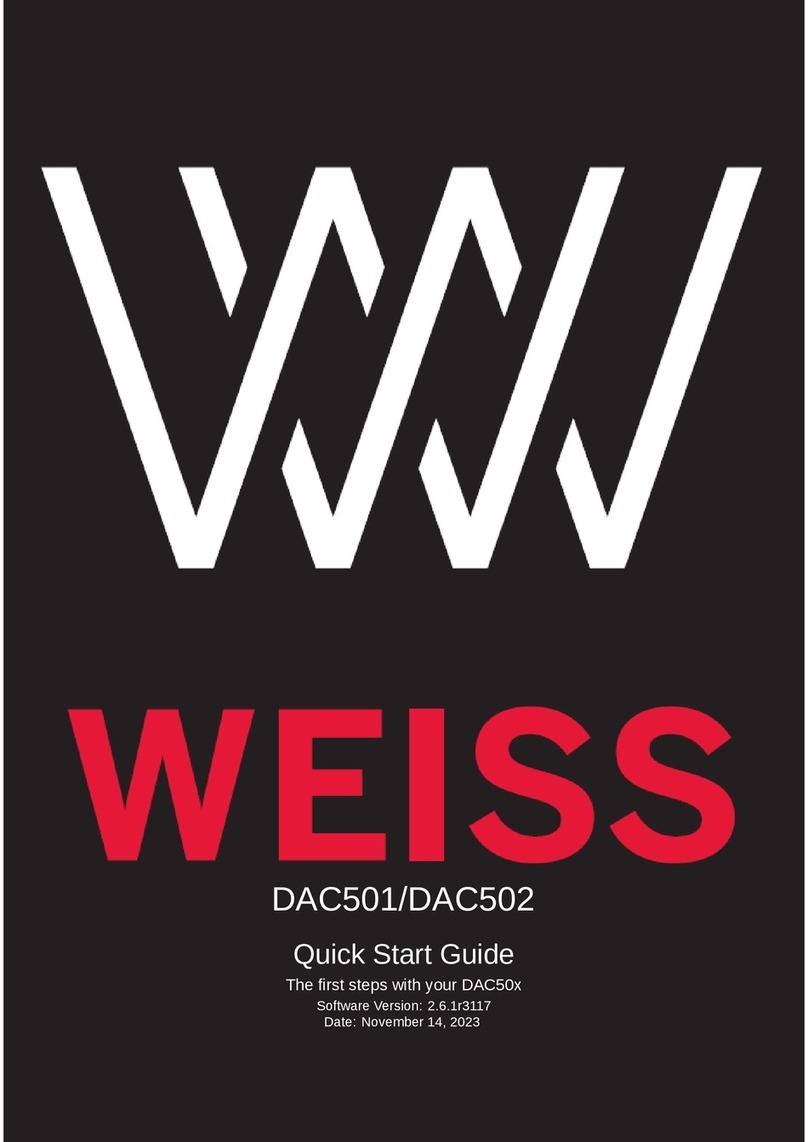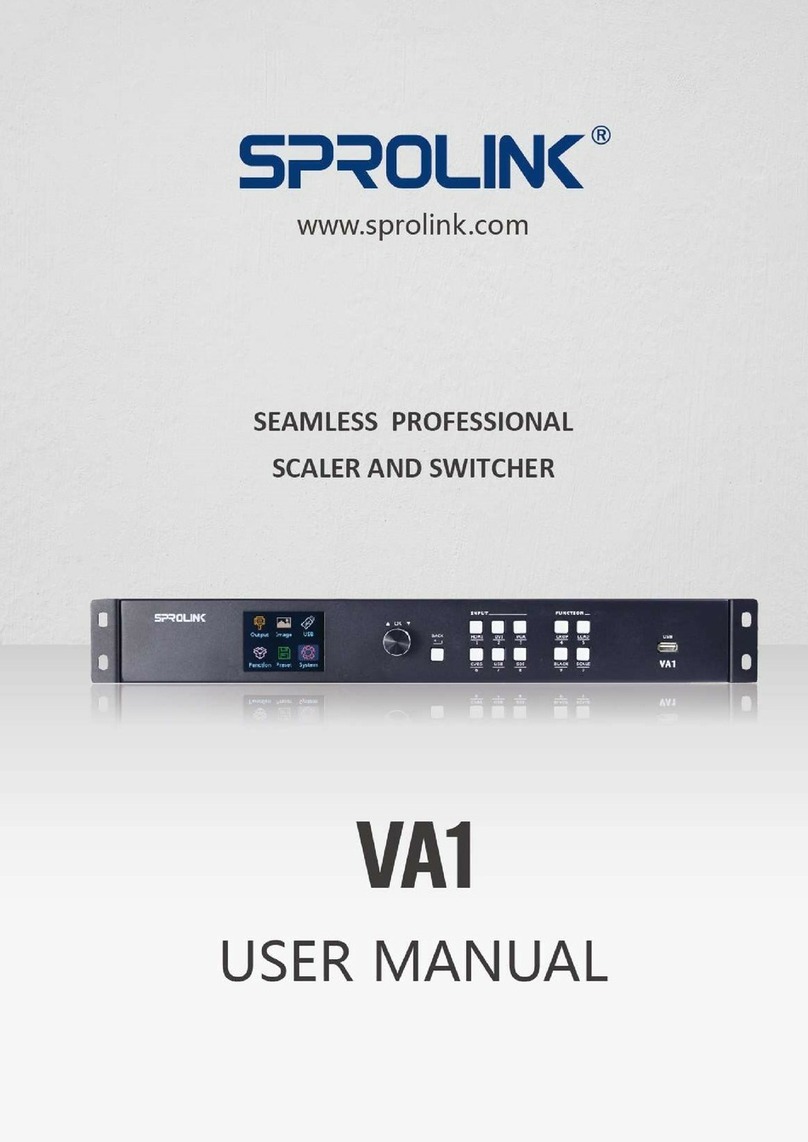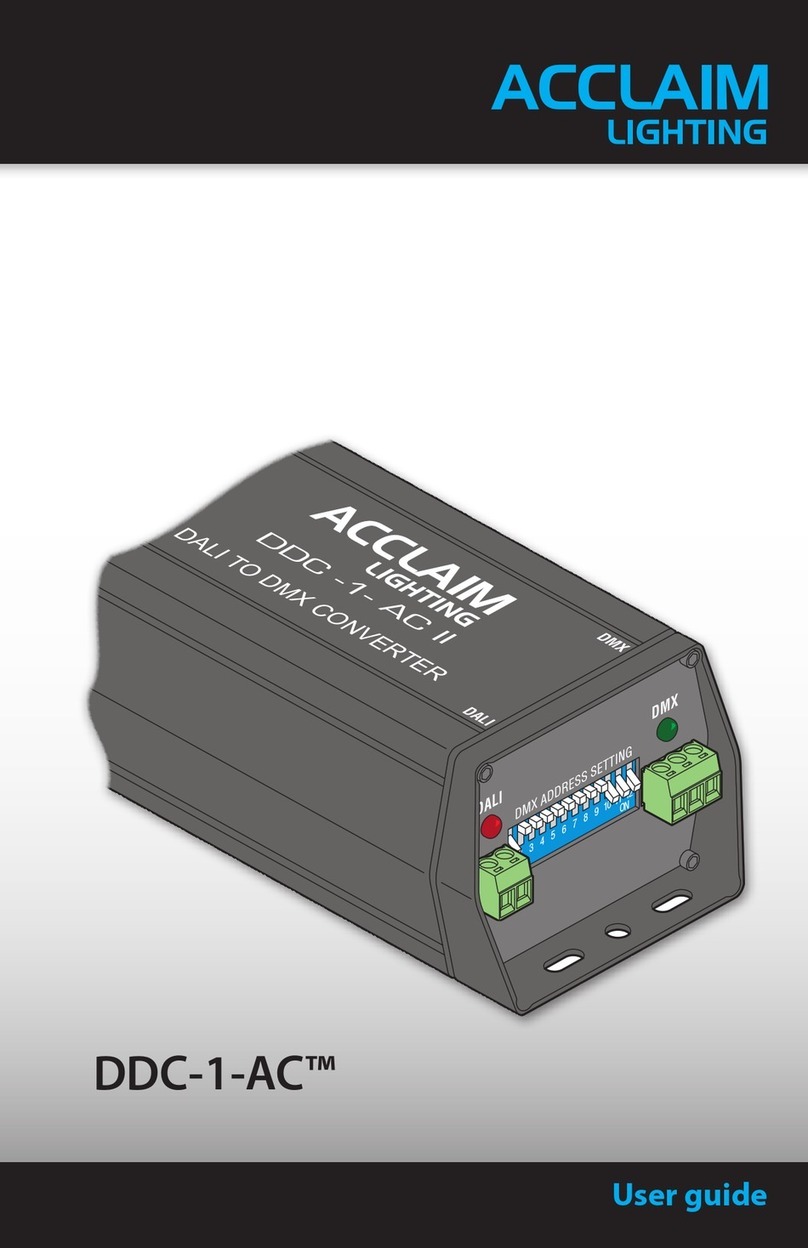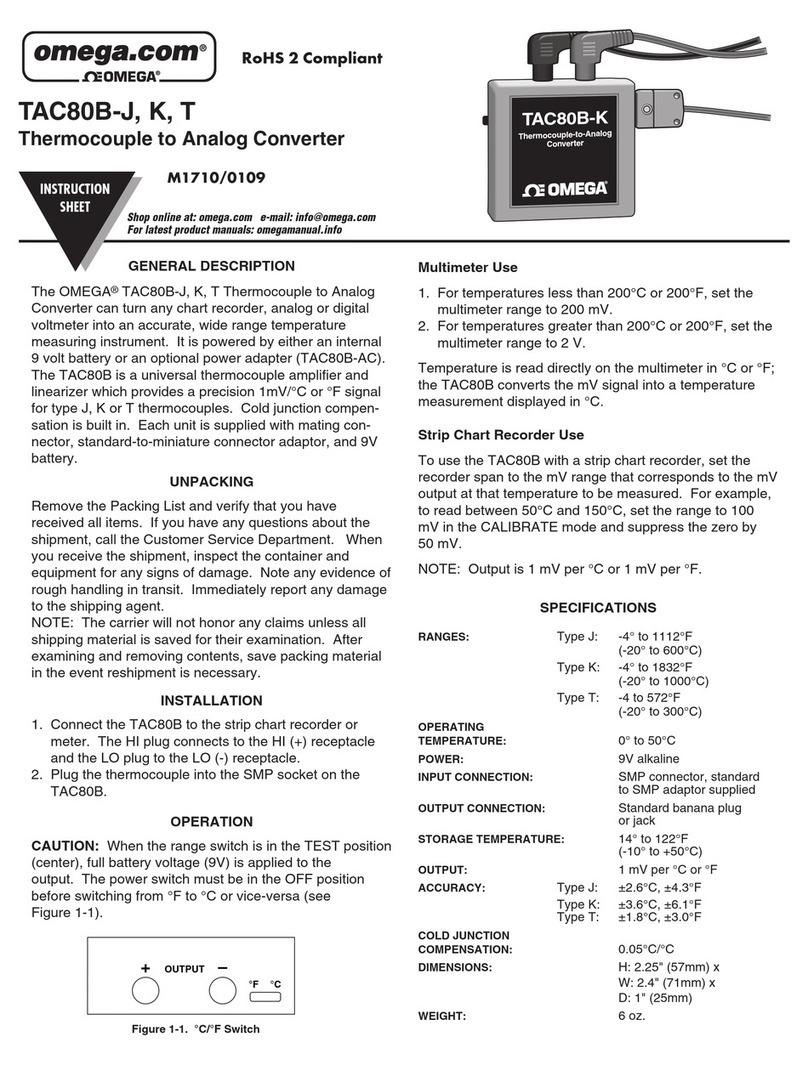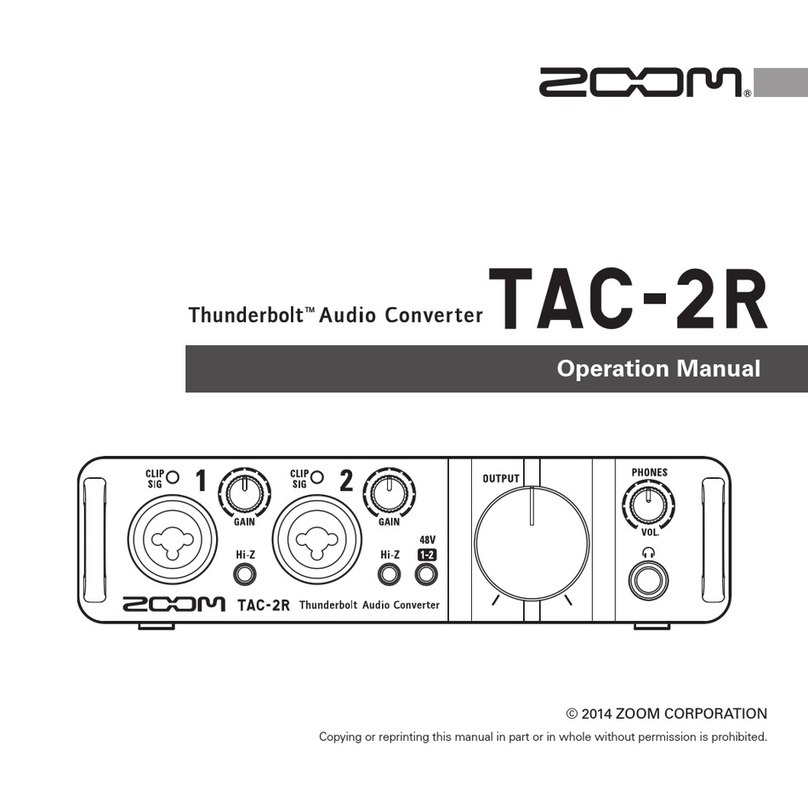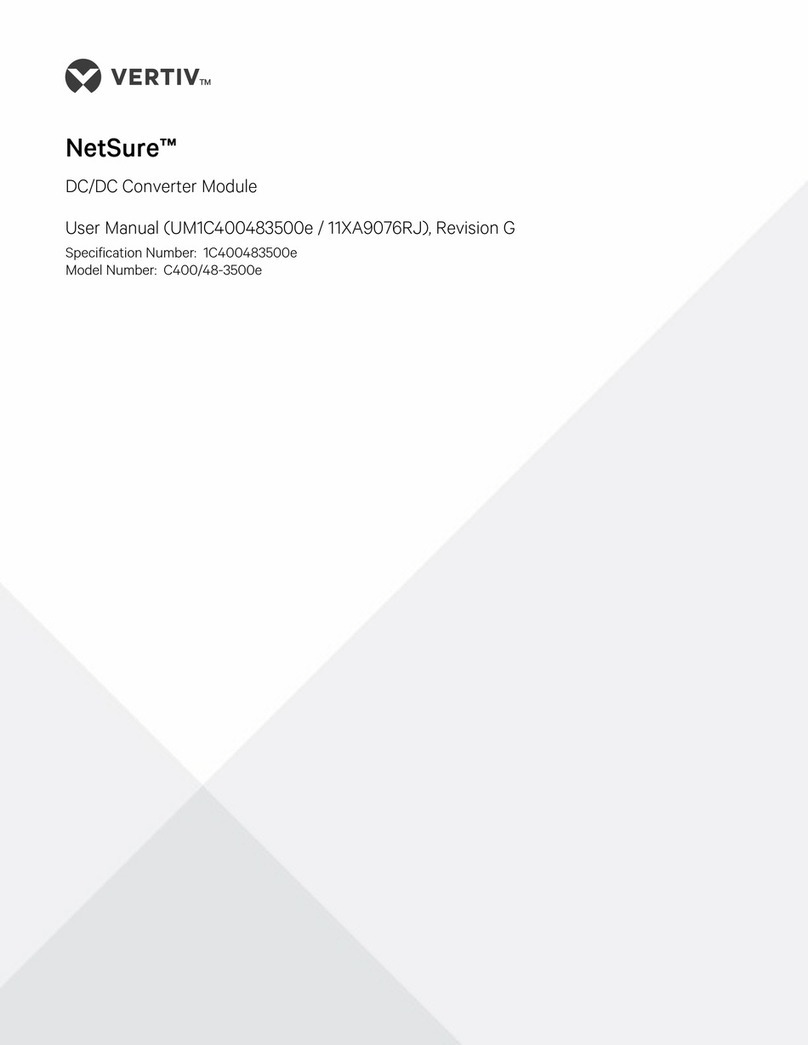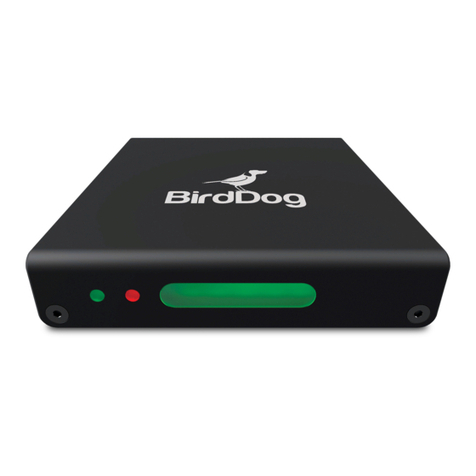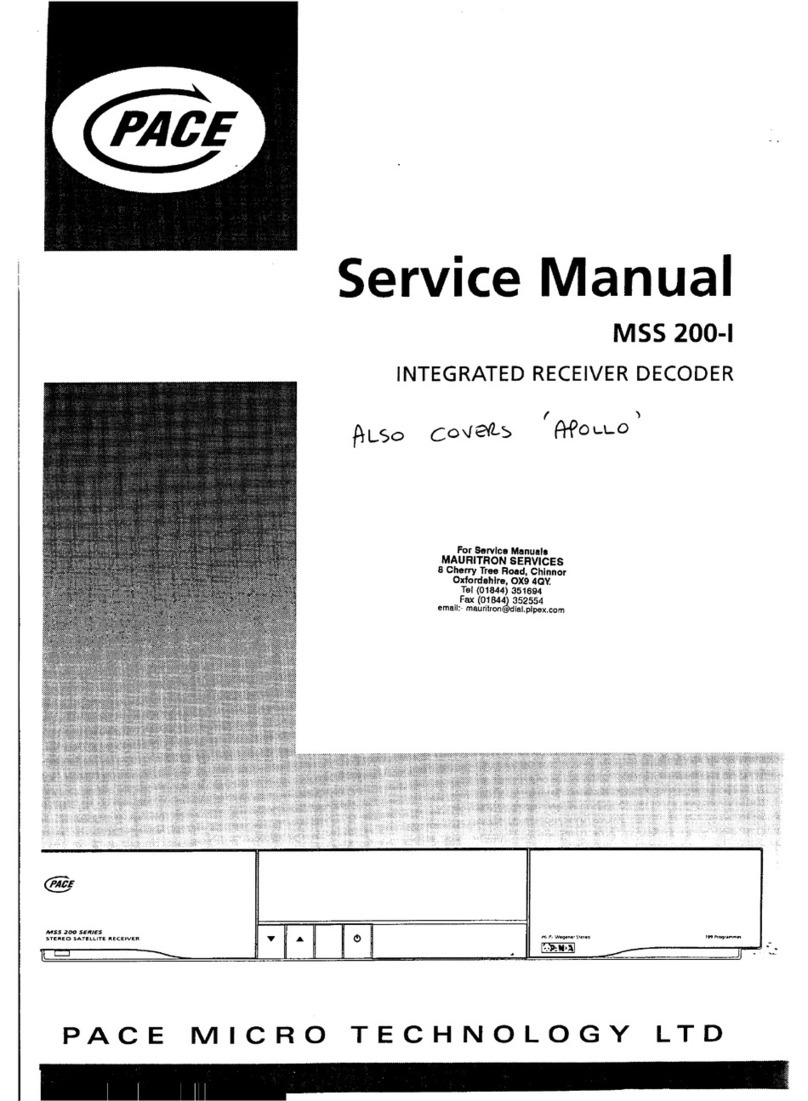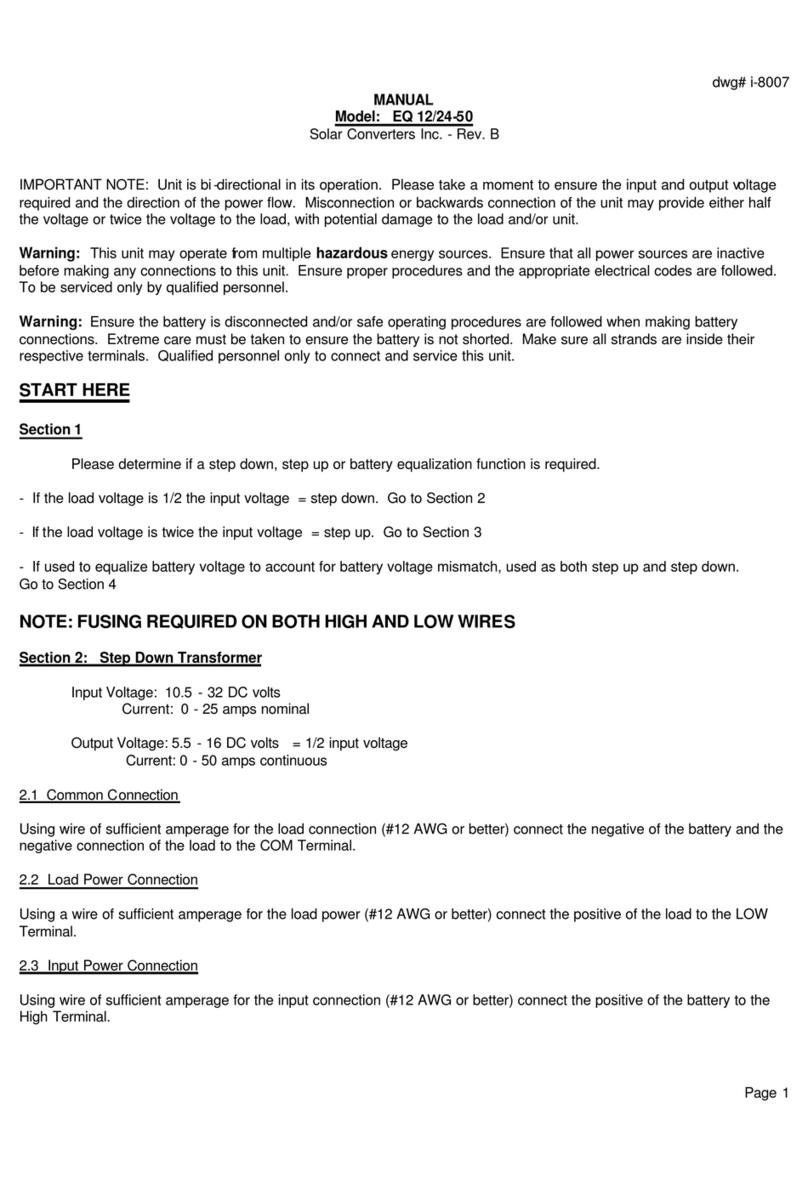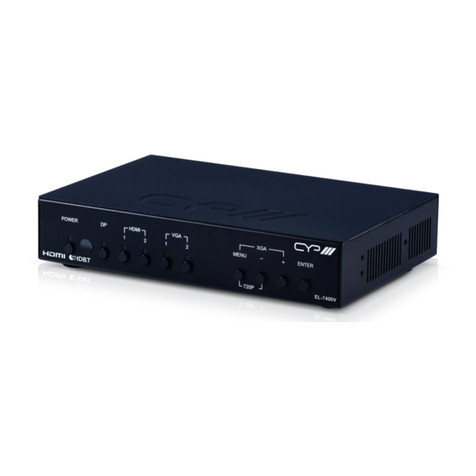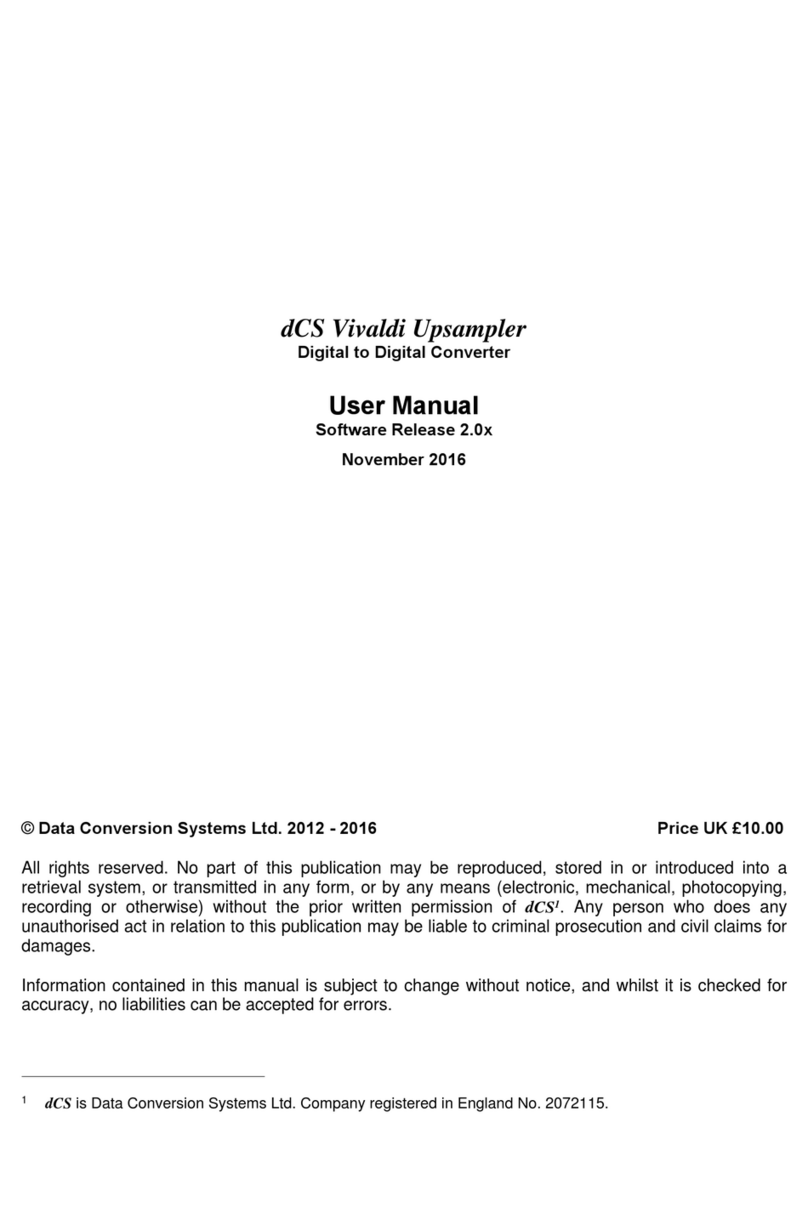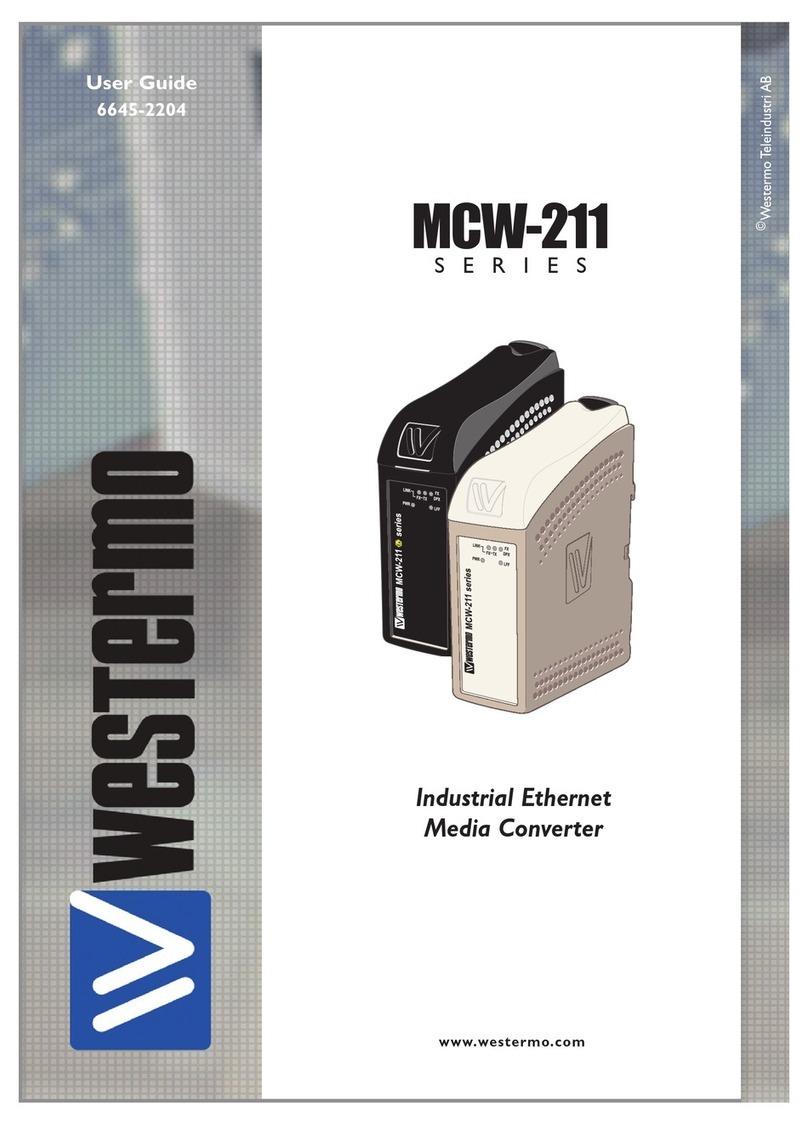OWNERS MANUAL FOR WEISS DAC202 D/A CONVERTER
Page
6
Date: 03/10
Converter (A/D). The inverse in the Digita to Ana og Converter
(D/A).
A physica aw states that in order to represent any given ana og
signa in the digita domain, one has to samp e that signa with
at east twice the frequency of the highest frequency contained
in the ana og signa . If this aw is vio ated so ca ed a iasing
components are generated which are perceived as a very nasty
kind of distortion. So if one defines the audio band of interest to
ie between 0 and 20 kHz, then the minimum samp ing
frequency for such signa s must be 40kHz.
For practica reasons exp ained be ow, the samp ing frequency
of 44.1kHz was chosen for the CD. A samp ing frequency of
44.1kHz a ows to represent signa s up to 22.05kHz. The
designer of the system has to take care that any frequencies
above 22.05kHz are sufficient y suppressed before samp ing at
44.1kHz. This suppression is done with the he p of a ow pass
fi ter, which cuts off the frequencies above 22.05kHz. In
practice such a fi ter has a imited steepness, i.e. if it
suppresses frequencies above 22.05kHz it a so suppresses
frequencies between 20kHz and 22.05kHz to some extent. So in
order to have a fi ter, which sufficient y suppresses frequencies
above 22.05kHz, one has to a ow it to have a so-ca ed
transition band between 20kHz and 22.05kHz where it gradua y
bui ds up its suppression.
Note that so far we have ta ked about the so-ca ed anti-a iasing
fi ter, which fi ters the audio signa ahead of the A/D conversion
process. For the D/A conversion, which is of more interest to
the High-End Hi-Fi enthusiast, essentia y the same fi ter is
required. This is because after the D/A conversion we have a
time discrete ana og signa , i.e. a signa that ooks ike steps,
having the rate of the samp ing frequency.
Such a signa contains not on y the origina audio signa
between 0 and 20kHz but a so rep icas of the same signa
symmetrica around mu tip es of the samp ing frequency. This
may sound comp icated, but the essence is that there are now
signa s above 22.05kHz. These signa s come from the samp ing
process. There are now frequencies above 22.05kHz which have
to be suppressed, so that they do not cause any
intermodu ation distortion in the amp ifier and speakers, do not
burn tweeters or do not make the dog go mad.
Again, a ow pass fi ter, which is ca ed a „reconstruction fi ter“,
is here to suppress those frequencies. The same app ies to the
reconstruction fi ter as to the anti-a iasing fi ter: Pass-band up
to 20kHz, transition-band between 20kHz and 22.05kHz, stop-
band above 22.05kHz. You may think that such a fi ter is rather
"steep", e.g. frequencies between 0 and 20kHz go through
unaffected and frequencies above 22.05kHz are suppressed to
maybe 1/100'000th of their initia va ue. You are right, such a
fi ter is very steep and as such has some nasty side effects.
For instance it does strange things to the phase near the cutoff
frequency (20kHz) or it shows ringing due to the high
steepness. In the ear y days of digita audio these side effects
have been recognized as being one of the main cu prits for
digita audio to sound bad.
So engineers ooked for ways to enhance those fi ters. They
can’t be e iminated because we are ta king aws of physics here.
But what if we run the who e thing at higher samp ing rates?
Like 96kHz or so? With 96kHz we can a ow frequencies up to
48kHz, so the reconstruction fi ter can have a transition band
between 20kHz and 48kHz, a very much re axed frequency
response indeed. So et’s run the who e at 96kHz or even
higher! We – the CD stays at 44.1kHz. So in order to have that
ana og owpass fi ter (the reconstruction fi ter) to run at a
re axed frequency response we have to change the samp ing
frequency before the D/A process. Here is where the Upsamp er
comes in. It takes the 44.1kHz from the CD and upsamp es it to
88.2kHz or 176.4kHz or even higher. The output of the
upsamp er is then fed to the D/A converters, which in turn feeds
the reconstruction fi ter.
A modern audio D/A converter chips have such an upsamp er
(or oversamp er) a ready bui t into the chip. One particu ar chip,
